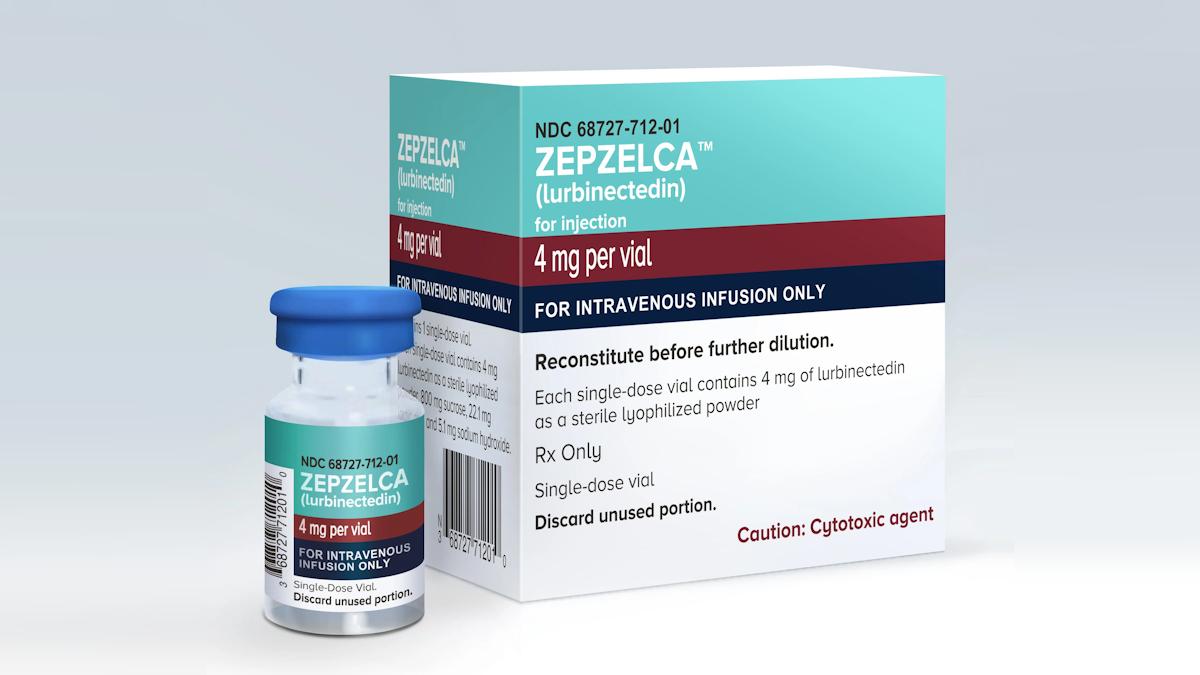WCLC: Biomarker could guide Dato-DXd use in lung cancer

A biomarker could help identify patients with lung cancer who are most likely to benefit from treatment with AstraZeneca and Daiichi Sankyo's TROP2-directed drug datopotamab deruxtecan (Dato-DXd).
The antibody-drug conjugate (ADC) is currently under review by the FDA as a treatment for advanced or metastatic non-squamous non-small cell lung cancer (NSCLC) in adults who have undergone prior systemic therapy, with a decision due in December.
It was filed on the back of progression-free survival data from the TROPION-Lung01 study, although, there was disappointment for AZ and Daiichi Sankyo after Dato-DXd was unable to show a statistically significant improvement in overall survival (OS) compared to docetaxel, currently a go-to option in patients who have failed prior targeted drugs or immunotherapies.
AZ has developed an artificial intelligence-powered biomarker – known as quantitative continuous scoring (QCS) – to try to guide treatment with the ADC to those most likely to benefit from it. It has also partnered with Roche to turn it into a companion diagnostic that could support the launch of Dato-DXd if approved.
Simply looking for TROP2 on cancer cell surfaces using immunohistochemical (IHC) assays has not proved to be effective in predicting therapeutic response to TROP2 ADCs. The QCS deep learning algorithm was designed to investigate TROP2 in both the membrane and cell interior (cytoplasm) for all individual cells across a digitised image of a biopsy slide.
The ratio of TROP2 in the membrane to the cytoplasm – normalised membrane ratio (NMR) – was used to stratify patients into groups that were then compared for their response to Dato-DXd treatment.
In a nutshell, a retrospective look at the Tropion-Lung01 data found much better efficacy in patients who were deemed positive for the QCS-NMR biomarker than those who were negative.
In the positive group, Dato-DXd reduced the risk of disease progression or death by 43% versus docetaxel – with a median PFS of 6.9 months versus 4.1 months for docetaxel – which compared to a 25% reduction for the overall study population.
For patients without the biomarker, Dato-DXd performed worse than docetaxel, with a median PFS of 2.9 months and 4 months, respectively.
"We have shown with this analysis that the more precise quantitative measurement of TROP2 on and inside tumour cells, enabled by AZ's computational pathology platform, can identify which patients with non-small cell lung cancer are most likely to benefit from treatment," said trial investigator Marina Garassino of the University of Chicago, who presented the data at the World Conference on Lung cancer (WCLC).
Dato-DXd is heading for a decision in December from the FDA based on the Tropion-Lung01 data, with the jury out on its approvability after the OS miss and a lack of efficacy in the squamous population.
A rival TROP2 ADC from Gilead Sciences, Trodelvy (sacituzumab govitecan), also failed to deliver wholly convincing data in NSCLC. The drug achieved a modest 16% OS reduction in the EVOKE-01 study as a second-line treatment for both squamous and non-squamous NSCLC patients after Gilead said earlier it had missed the endpoint.
AZ licensed rights to Dato-DXd in July 2020 for $1 billion upfront, plus up to $5 billion in regulatory and sales milestones, and the company has pinned a peak sales target of $5 billion a year on the drug.
AZ and Daiichi Sankyo have more than 20 trials evaluating the efficacy and safety of Dato-DXd across multiple cancers, including NSCLC, triple-negative breast cancer (TNBC), and HR-positive, HER2-negative breast cancer.
AZ has already suggested that the new algorithm could assist in the development of the ADC. Its head of oncology R&D, Susan Galbraith, said it "has great potential to help more precisely select patients across our broader antibody-drug conjugate portfolio."
Photo by National Cancer Institute on Unsplash













